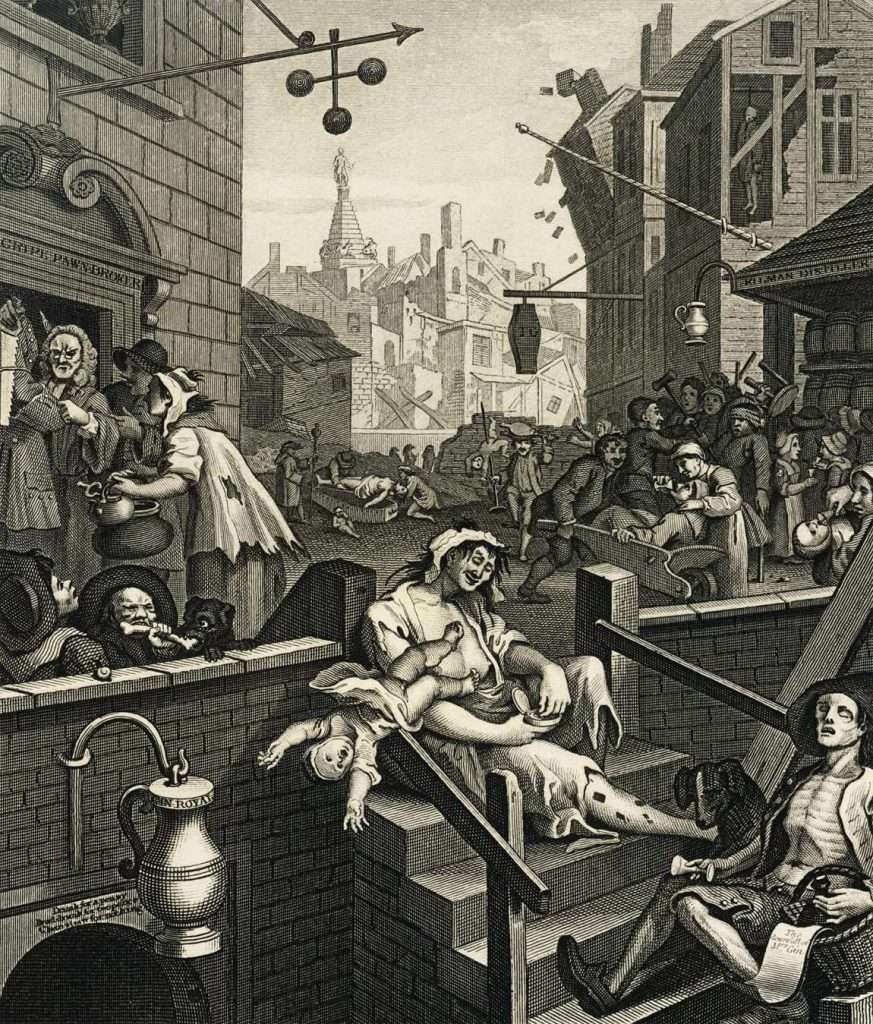I had hoped for so much more. This small and disappointing exhibition seems to serve only to repeat the gloomy reality that the world already knows: that the British and alcohol are a toxic and deeply unlovely combination. There are few experiences more tiresome than watching people get drunk, (unless you happen to be one of them) and the pictorial expression of this, with some added moralising by mediocre Victorian painters such as Robert Braithwaite Martineau (The Last Day in the Old Home, 1862) does little to lift the spirit of the visitor.
Other countries and other painters don’t seem to buy into the gloom and cod morality that the British always associate with excess of alcohol. One longs here for a different view – the bar of the Folies Bergere or a Frans Hals drinking scene or the joyous work of Scandinavians such as Peder Severin Kroyer whose ‘Hip Hip Hurrah!’ Artists’ Party at Skagen’, (1888) shows how alcohol can be enjoyed without negativity.
But quite apart from the dreadful consequences of alcohol, which we all know, this exhibition could have addressed the (to me at any rate) more interesting question of the relationship of alcohol to artistic creativity.
Whether or not you agree with the ditty:
Turners, Dürers, or Bellinis
Do not spring from dry Martinis.
Goya’s genius, Rubens’ powers
Did not stem from whiskey sours” (Arthur Kramer, ‘Homily for Art Students’, New Yorker, 1946)
It is nevertheless a historical fact that a great number of painters have used alcohol to excess: Gauguin and van Gogh recognised this, Frans Hals was famous for his riotous drinking and Henri de Toulouse-Lautrec carried his absinthe around in a specially made hollow walking stick. Modern examples are Francis Bacon, Lucian Freud, Willem de Kooning and Jackson Pollock. Would the work of these great men have been different if they had not used alcohol? I think so.
I would love to see an exhibition on this theme, one that explored the contribution of alcohol to creativity of not just painters but poets and prose writers too.
Should we, in other words, be grateful for the contribution of alcohol to the creativity, and thus the overall progress, of the human race? Would the arts be so enjoyable if alcohol had not been discovered? Arthur Kramer’s closing lines raise this question and I would love to explore it further:
Alcohol’s ingurgitation
Is, in short, no substitution
For creative inspiration
Or artistic execution.
Guzzle vino
Till you’re blotto
Splotches will remain but splotches.
Perugino,
Ingres, Giotto
Were not born of double Scotches”
‘Nor, alas, will full sobriety
Whisk you into their society.
BP Spotlight: Art and Alcohol runs at Tate Britain until 13th November 2016.


